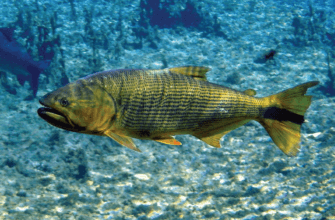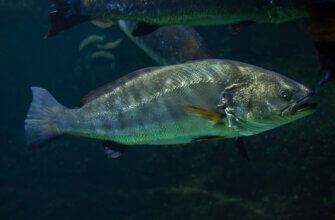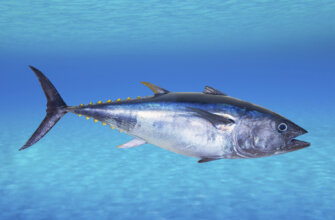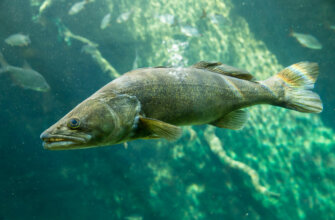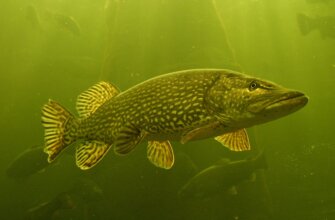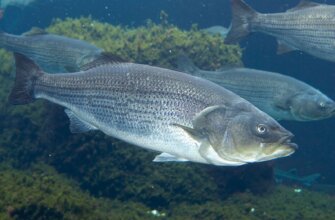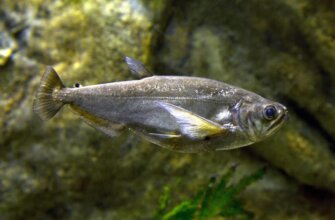Salmon is a type of fish that belongs to the family Salmonidae, which also includes trout, char, and grayling. There are several species of salmon, but the most well-known and commercially important ones are the Atlantic salmon (Salmo salar) and the Pacific salmon, which includes various species such as Chinook, coho, sockeye, pink, and chum salmon.
Salmon are native to the North Atlantic and Pacific oceans and are known for their migratory behavior. They spend most of their lives in saltwater but return to their natal freshwater rivers and streams to spawn. This incredible journey against the current is a natural spectacle observed by many people around the world.
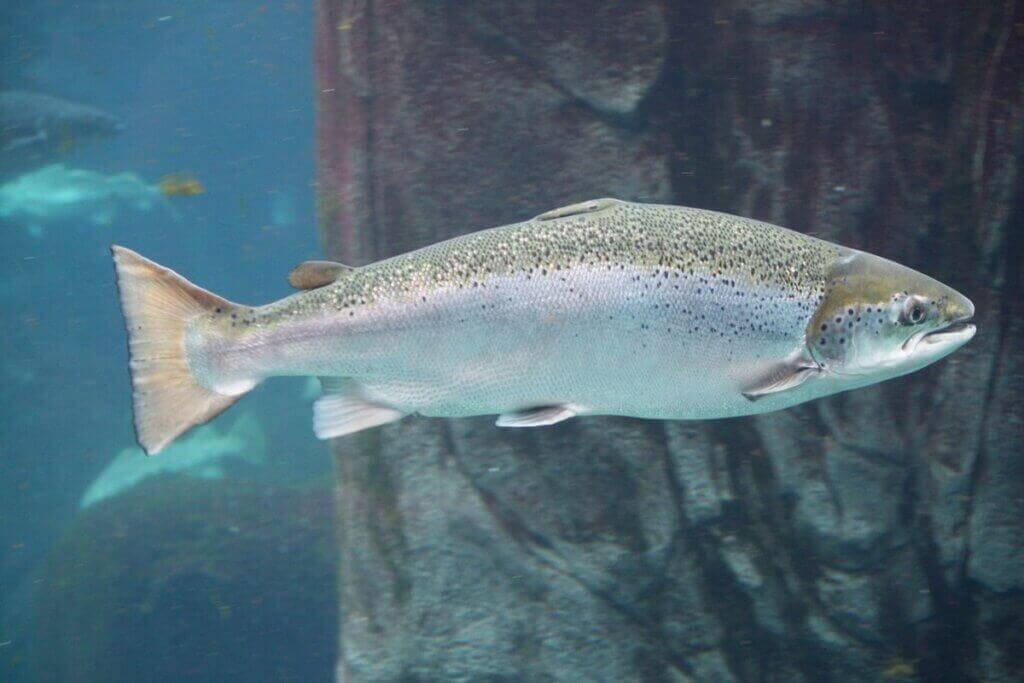
Salmon is highly valued for its nutritional content and delicious taste. It is an excellent source of high-quality protein, omega-3 fatty acids, vitamin D, and several minerals such as selenium and potassium. These nutrients are beneficial for heart health, brain function, and overall well-being.
Salmon can be prepared and cooked in various ways, including grilling, baking, broiling, poaching, and smoking. It is commonly used in a variety of dishes, such as sushi, sashimi, fish fillets, steaks, and salads.
It is worth noting that there are concerns about the sustainability and environmental impact of salmon farming, as it can have negative effects on wild salmon populations and ecosystems. Therefore, it is advisable to choose sustainably sourced salmon and support responsible fishing practices.
Species
Salmon encompasses several species, both from the Atlantic and Pacific oceans. Here are some of the most well-known species of salmon:
- Atlantic Salmon (Salmo salar): Atlantic salmon are native to the rivers of Europe and North America. They have a silvery-blue color when in the ocean, and their flesh ranges from orange to pink. Atlantic salmon are prized for their rich flavor and are often raised in aquaculture systems.
- Chinook Salmon (Oncorhynchus tshawytscha): Also known as king salmon or blackmouth salmon, Chinook salmon are the largest species of Pacific salmon. They have a high fat content and rich flavor, with flesh ranging from ivory to deep red. Chinook salmon are native to the North Pacific Ocean and are highly valued for their culinary qualities.
- Coho Salmon (Oncorhynchus kisutch): Coho salmon, also called silver salmon, are native to the North Pacific. They have bright silver sides and reddish-orange flesh. Coho salmon are known for their delicate flavor and firm texture, making them popular for grilling, baking, and smoking.
- Sockeye Salmon (Oncorhynchus nerka): Sockeye salmon, also known as red salmon, are prized for their deep red flesh and robust flavor. They have a relatively high fat content and are known for their striking color. Sockeye salmon are found in the North Pacific and are often used in sushi, smoked salmon, and canned salmon products.
- Pink Salmon (Oncorhynchus gorbuscha): Pink salmon, also referred to as humpback salmon, are the smallest and most abundant species of Pacific salmon. They have pale pink flesh and a mild flavor. Pink salmon are commonly canned or used for smoking and are popular due to their affordability.
- Chum Salmon (Oncorhynchus keta): Chum salmon, also known as dog salmon or keta salmon, have firm, pale pink flesh and a milder flavor compared to other salmon species. Chum salmon are found in the North Pacific and are often used for smoking or as a more affordable option for fillets and canned salmon.
These are just a few examples of the many salmon species found in different parts of the world. Each species has its own unique characteristics, flavor profile, and culinary uses.
Appearance
Salmon have distinct physical characteristics that vary among species and their life stages. Here are some common features and appearances of salmon:
- Body Shape. Salmon have streamlined, elongated bodies that are designed for swimming. They have a fusiform shape, tapering towards the tail, which allows them to move efficiently through the water.
- Size. The size of salmon depends on the species and the stage of their life cycle. Generally, adult salmon range from about 2 to 5 feet (0.6 to 1.5 meters) in length, with some species, like Chinook salmon, capable of growing even larger. The size can also vary depending on factors such as age, habitat, and nutrition.
- Coloration. The coloration of salmon can change throughout their life cycle. When they are in the ocean, they typically have a silvery-blue color on their backs and sides, which helps them blend in with the water. As they prepare to spawn, their appearance transforms. Males develop more vibrant colors, including red, green, and purple hues, while females tend to have a darker, more subdued coloration. Additionally, some species, such as sockeye salmon, have distinct bright red flesh when they return to freshwater for spawning.
- Scales. Salmon have small, overlapping scales covering their bodies. These scales provide protection against predators and help reduce friction in the water. The scales are typically silver in color, contributing to the salmon’s overall appearance when they are in the ocean.
- Fins. Salmon have several fins, including the dorsal fin, adipose fin, pectoral fins, pelvic fins, and caudal fin (tail fin). These fins aid in stability, maneuvering, and propulsion during swimming.
- Teeth. Adult salmon have teeth that can vary in size and shape depending on the species and their feeding habits. For example, Chinook salmon have larger and sharper teeth compared to other species, as they are predatory and feed on other fish.
It’s important to note that there can be variations in appearance among different salmon species and even within the same species, depending on factors such as age, sex, and environmental conditions.
Size and weight
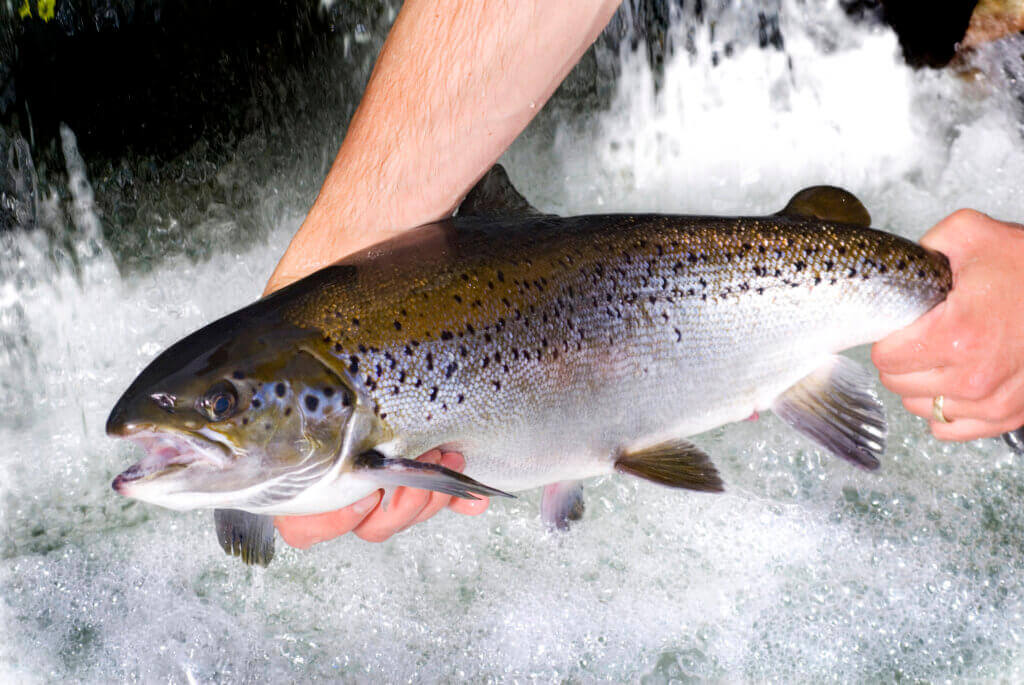
The size and weight of salmon can vary depending on the species, age, and environmental conditions. Here are some general guidelines for the size and weight of different salmon species:
- Atlantic Salmon (Salmo salar). Atlantic salmon can grow to varying sizes depending on their habitat. On average, adult Atlantic salmon range from 24 to 30 inches (60 to 75 cm) in length and weigh between 8 and 20 pounds (3.5 to 9 kg). However, larger individuals can reach lengths of over 4 feet (120 cm) and weigh over 50 pounds (22 kg).
- Chinook Salmon (Oncorhynchus tshawytscha). Chinook salmon, also known as king salmon, are the largest species of Pacific salmon. They can reach impressive sizes. Adult Chinook salmon typically range from 24 to 36 inches (60 to 90 cm) in length and weigh between 10 and 50 pounds (4.5 to 22.5 kg). However, some exceptionally large Chinook salmon can exceed 4 feet (120 cm) in length and weigh over 100 pounds (45 kg).
- Coho Salmon (Oncorhynchus kisutch). Coho salmon are slightly smaller than Chinook salmon. Adult coho salmon usually range from 24 to 30 inches (60 to 75 cm) in length and weigh between 8 and 15 pounds (3.5 to 7 kg). However, larger individuals can reach lengths of over 3 feet (90 cm) and weigh up to 30 pounds (13.5 kg).
- Sockeye Salmon (Oncorhynchus nerka). Sockeye salmon are smaller in size compared to Chinook and coho salmon. Adult sockeye salmon typically range from 18 to 31 inches (45 to 80 cm) in length and weigh between 4 and 15 pounds (1.8 to 7 kg). However, there are variations in size depending on the specific population.
- Pink Salmon (Oncorhynchus gorbuscha). Pink salmon are the smallest and most abundant species of Pacific salmon. Adult pink salmon generally range from 16 to 24 inches (40 to 60 cm) in length and weigh between 3 and 5 pounds (1.4 to 2.3 kg). They are known for their relatively small size compared to other salmon species.
It’s important to note that these size and weight ranges are approximate and can vary depending on various factors. Additionally, there can be regional and population differences within each species.
Diet
The diet of salmon varies depending on their life stage and species. Here is an overview of the typical diet of salmon:
- Fry and Smolt Stage – when salmon hatch from their eggs, they start their life as fry. During this stage, they primarily feed on small aquatic insects, zooplankton, and tiny crustaceans. As they grow and develop, they transition into the smolt stage, where they begin to adapt to saltwater environments. Smolts still feed on small invertebrates but also start consuming small fish and fish larvae.
- Adult Stage (In the Ocean) – once salmon reach the adult stage and migrate to the ocean, their diet becomes more diverse and includes a wider range of prey. The specific diet can vary depending on the species and availability of food sources. Generally, adult salmon are opportunistic predators and feed on a variety of marine organisms, including small fish, squid, shrimp, krill, and other marine invertebrates. They have a keen sense of smell that helps them locate prey.
- Spawning Stage (In Freshwater) – when salmon return to freshwater for spawning, their feeding behavior changes. During this stage, their primary focus is on reproduction rather than feeding. They typically do not eat while they are in freshwater and rely on their energy reserves for the spawning process.
It’s worth noting that the diet of salmon can have a significant impact on their flesh color. For example, the red color of the flesh in species like sockeye salmon comes from their consumption of shrimp and krill, which contain pigments called carotenoids. Diet can also influence the nutritional composition of salmon, such as the levels of omega-3 fatty acids.
It’s important to mention that there can be variations in the diet of salmon depending on factors such as geographical location, ecosystem dynamics, and availability of prey.
Behavior
Salmon exhibit fascinating behaviors throughout their life cycle. Here are some notable behaviors of salmon:
- Migration. Salmon are known for their remarkable migration journeys. After hatching in freshwater rivers or streams, young salmon, called fry, begin their downstream migration towards the ocean. They spend several months to a few years in the ocean, where they grow and mature. When it’s time to spawn, adult salmon navigate their way back to their natal freshwater streams, often traveling hundreds or even thousands of miles against strong currents and obstacles. This homing instinct is guided by their sense of smell and other environmental cues.
- Spawning. Once salmon reach their natal freshwater streams, they undergo significant changes in preparation for spawning. Males develop pronounced physical features, such as hooked jaws, humps, and vibrant colors, to compete for females and defend territory. Females also undergo changes, developing darker colors and a swollen abdomen filled with eggs. Spawning occurs as the female creates a nest, called a redd, in the gravel, and the male fertilizes the eggs externally. After spawning, both male and female salmon typically die, while the next generation begins its journey.
- Jumping and Leaping. Salmon are known for their ability to leap out of the water, often seen when they encounter barriers such as waterfalls or rapids during their migration. This behavior helps them overcome obstacles and reach their spawning grounds. The impressive jumping ability of salmon is facilitated by their strong muscles and their ability to generate power with their tails.
- Feeding and Predatory Behavior. In their oceanic phase, adult salmon are predatory fish, actively seeking and capturing prey. They are known for their agility and speed, allowing them to pursue and catch smaller fish, crustaceans, and other marine organisms. They rely on keen eyesight, lateral lines, and an acute sense of smell to locate and capture their prey.
- Social Behavior. Salmon can exhibit social behavior during different stages of their life cycle. In the ocean, they often form schools or shoals, where they swim together in groups for protection and increased foraging efficiency. During spawning, there can be competition and territorial behavior among males as they vie for access to females and defend their nests.
- Olfactory Navigation. Salmon have a remarkable sense of smell that enables them to navigate vast distances across the ocean and back to their natal streams. They can detect and follow the unique scent of their home river, helping them find their way even in complex river systems and identify suitable spawning grounds.
These behaviors contribute to the survival, reproduction, and ecological importance of salmon in their respective ecosystems. They are a testament to the incredible adaptability and resilience of these remarkable fish.
Spawning
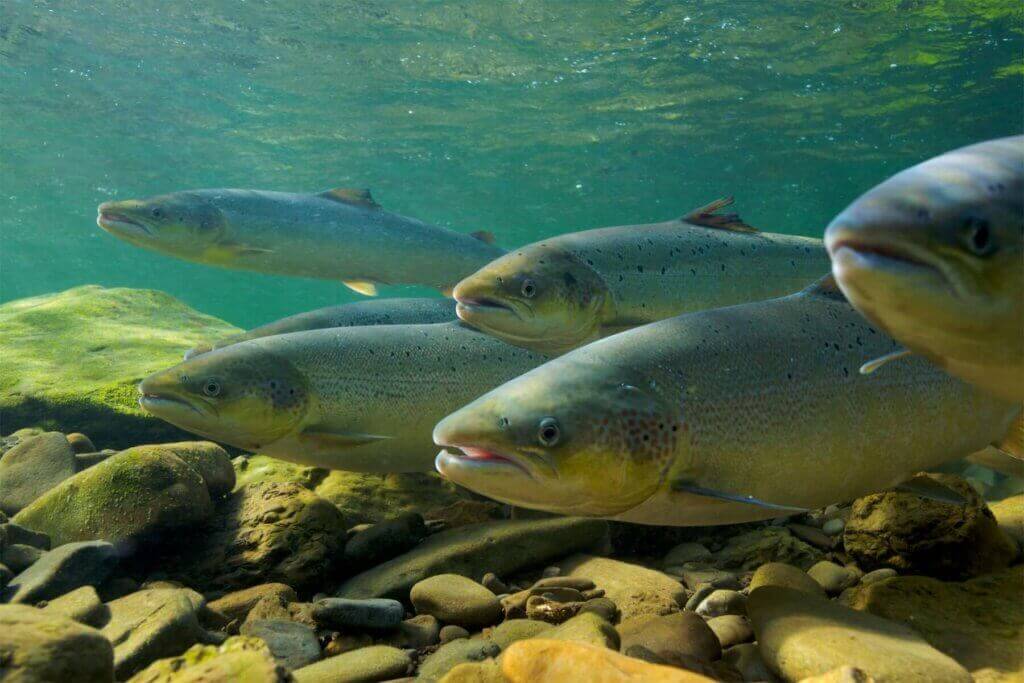
Spawning is the process by which salmon reproduce. It is a crucial stage in their life cycle that involves migrating to their natal streams or rivers, selecting a suitable spawning ground, and laying their eggs.
Here is an overview of the spawning process for salmon:
- Migration. Adult salmon undertake a remarkable journey from the ocean back to the freshwater streams or rivers where they were born. This journey is called the salmon run. They navigate by using their sense of smell and the Earth’s magnetic field to locate their natal spawning grounds.
- Selecting a spawning ground. Once they reach their destination, salmon search for suitable areas in the stream or river to spawn. They typically prefer shallow, gravel-bottomed areas with moderate water flow. These locations provide the best conditions for egg survival and development.
- Building nests (redds). Male salmon, known as “bucks” or “spawners,” vigorously excavate nest-like depressions called redds in the streambed using their tails. The female salmon, known as “hens” or “spawners,” then release their eggs into the redds.
- Fertilization. As the female releases her eggs, the male swims alongside her, simultaneously releasing his sperm or milt. The eggs are fertilized externally, as the milt comes into contact with the eggs.
- Covering the eggs. After fertilization, the female uses her tail to cover the eggs with gravel to protect them from predators and provide them with oxygenated water.
- Spawning completion. Once the female has finished depositing all her eggs in multiple redds, both male and female salmon have completed their reproductive duties. Exhausted from the spawning process, they often die shortly after. Their carcasses provide important nutrients to the ecosystem.
- Egg incubation. The eggs remain in the gravel, undergoing a period of incubation. The time it takes for the eggs to hatch depends on the salmon species and environmental conditions such as water temperature.
- Fry emergence. After hatching, the young salmon, called fry, emerge from the gravel. They initially rely on their yolk sacs for nutrition and gradually transition to feeding on small aquatic organisms as they grow.
It’s important to note that the specific details of the spawning process can vary among different salmon species, such as Chinook, Coho, Sockeye, Pink, and Atlantic salmon.
Fishing
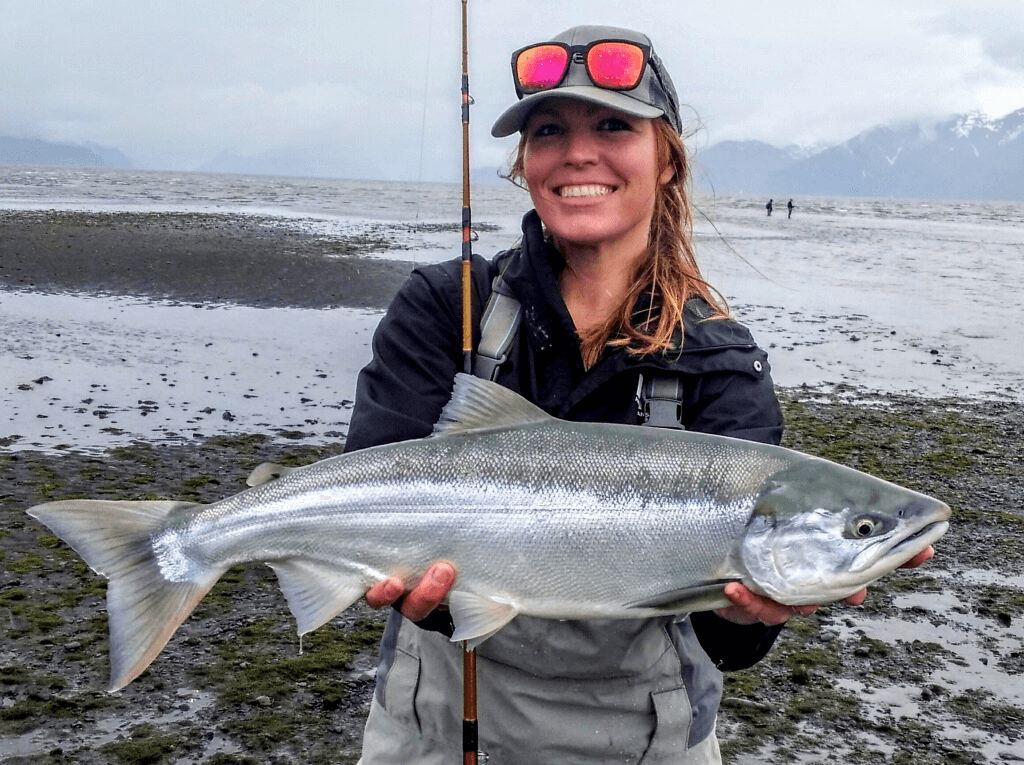
Fishing for salmon is a popular recreational and commercial activity in many regions around the world, particularly in areas where salmon populations are abundant. The methods and regulations for fishing salmon can vary depending on the location and the specific salmon species being targeted.
Here are some common methods used for fishing salmon:
- Sport Fishing. Sport fishing for salmon is primarily done by anglers for recreational purposes. It often involves using fishing rods and reels with various techniques such as casting, trolling, or fly fishing. Anglers may target salmon from the shore, in rivers or streams, or from boats.
- Commercial Fishing. Commercial fishing for salmon is carried out by professional fishermen to harvest salmon for commercial sale and distribution. Commercial salmon fishing methods can include gillnetting, seine netting, trolling, and longlining, depending on the specific fishery and local regulations.
- Gillnetting. Gillnets are nets made of mesh that are set in the water to entangle the fish. The netting is designed to catch salmon by their gills as they swim through it. This method is commonly used in commercial salmon fishing.
- Seine Netting. Seine nets are large nets that can be set in the water and used to surround a school of salmon. The net is then pulled in, capturing the fish inside. Seine netting can be done from boats or from the shore and is used in both commercial and subsistence fishing.
- Trolling. Trolling is a method commonly used in both recreational and commercial salmon fishing. It involves trailing a fishing line with one or more lures or baited hooks behind a moving boat. The boat’s speed and movement attract the salmon, enticing them to strike at the lures or bait.
- Fly Fishing. Fly fishing for salmon is a popular angling method that involves casting a specialized fly line with a lightweight fly rod and reel. Anglers use artificial flies that imitate natural prey to entice the salmon to strike. Fly fishing for salmon is often practiced in rivers and streams.
It’s important to note that fishing regulations and seasons for salmon can vary widely depending on the location and the specific species being targeted. These regulations are typically put in place to manage and conserve salmon populations, ensuring their sustainability for future generations. It is advisable to check the local fishing regulations and obtain the necessary licenses and permits before engaging in salmon fishing to ensure compliance with the law and protect the health of the fish populations.
Lures
When fishing for salmon, using the right lures can greatly increase your chances of success. Here are some common types of lures that are effective for salmon fishing:
- Spoons: Spoons are metal lures shaped like, well, spoons. They have a curved shape that wobbles and reflects light, attracting the attention of salmon. Spoons come in various sizes and colors, and their action can be adjusted by altering the speed of retrieval. Popular spoon brands for salmon fishing include Mepps, Blue Fox, and Luhr Jensen.
- Plugs: Plugs are hard-bodied lures designed to mimic baitfish or other prey. They typically have a diving lip that allows them to dive to different depths when retrieved. Plugs often feature a wobbling or rattling action that entices salmon to strike. Examples of popular plug brands for salmon fishing include Rapala, Rebel, and Yo-Zuri.
- Spinners: Spinners consist of a rotating blade attached to a shaft and a weighted body. The spinning blade creates vibrations and flashes of light that attract salmon. Spinners can be effective in rivers and streams, as well as in open water. Some well-known spinner brands for salmon fishing include Panther Martin, Blue Fox, and Mepps.
- Jigs: Jigs are versatile lures that can be used for various fishing techniques. They consist of a weighted head and a skirt or soft plastic body. Jigs can be jigged vertically or cast and retrieved, imitating injured baitfish or shrimp. Colors and sizes of jigs can be varied to match the local salmon’s prey. Examples of popular jig brands for salmon fishing include Berkley Gulp!, Hogy, and Kalin’s.
- Flies: Fly fishing for salmon often involves using specially designed flies. These flies can imitate various prey items such as insects, eggs, or small fish. Salmon flies are typically larger and more robust than those used for trout or other species. Common fly patterns for salmon include streamers, egg patterns, and wet flies. Some well-known fly brands for salmon fishing include Orvis, Umpqua, and Fulling Mill.
Here are a few examples of fishing lures for salmon, along with their models and specifications:
- Luhr Jensen Krocodile Spoon:
- Model: Luhr Jensen Krocodile Spoon.
- Specifications: Available in various sizes (e.g., 1/4 oz, 3/8 oz, 5/8 oz) and colors (e.g., chrome, gold, rainbow trout). It has a wobbling action and can be cast or trolled. It is known for its versatility and effectiveness in attracting salmon.
- Rapala X-Rap Deep Diving Plug:
- Model: Rapala X-Rap Deep Diving Plug.
- Specifications: Dive depth ranges from 10 to 20 feet (depending on the specific model). It has a realistic minnow profile with textured scales and 3D holographic eyes. It features a prominent diving lip and an aggressive swimming action. Available in various sizes and colors.
- Blue Fox Vibrax Spinner:
- Model: Blue Fox Vibrax Spinner.
- Specifications: Comes in different sizes (e.g., #3, #4, #5) and colors. It has a brass or silver-plated blade with a stainless steel shaft. The blade spins, creating vibrations and flash that attract salmon. It is equipped with a sharp treble hook for secure hook-ups.
- Berkley PowerBait Power Wigglers:
- Model: Berkley PowerBait Power Wigglers.
- Specifications: Soft plastic jig-style lure designed to imitate baitfish. It has a lifelike wiggle action and is infused with scent and flavor for added attraction. Available in various sizes and colors. Can be used with a jighead or on a spinner rig.
- Orvis Woolly Bugger Fly:
- Model: Orvis Woolly Bugger Fly.
- Specifications: A popular fly pattern for salmon. It features a marabou tail, a body made of chenille or dubbed material, and a hackle collar. The Woolly Bugger comes in different sizes and colors (e.g., black, olive, brown). It can be fished on a floating line or sink-tip line.
Remember, these are just a few examples, and there are many more lure options available for salmon fishing. When selecting lures, consider factors such as water conditions, target salmon species, and local preferences. It’s also beneficial to consult with local fishing experts or visit tackle shops in your area for specific recommendations based on the salmon fishing conditions in your region.
Baits
When it comes to bait fishing for salmon, there are several effective options. The choice of bait depends on the specific salmon species, fishing location, and local regulations.
Here are some popular baits used for salmon fishing:
- Roe/Salmon Eggs: Fresh or cured salmon eggs are a classic and highly effective bait for salmon. They can be obtained from female salmon during the spawning season or purchased from bait shops. Roe can be fished on a single egg hook, tied into spawn sacks, or used with specialized egg clusters or roe bags.
- Herring: Whole or cut herring is another excellent bait for salmon. It is commonly used in both saltwater and freshwater fishing. Herring can be rigged with single or treble hooks and can be fished by drifting, trolling, or casting. Adding scent or brine to the herring can enhance its effectiveness.
- Anchovies: Anchovies are widely used as bait for salmon, especially in saltwater fisheries. They can be rigged by threading them onto a bait holder hook or by using a trolling spinner rig. Adding attractants or brine to the anchovies can make them more enticing to salmon.
- Sardines: Sardines, similar to anchovies, are oily baitfish that are attractive to salmon. They can be rigged similarly to anchovies and used in both saltwater and freshwater environments.
- Sand Shrimp: Sand shrimp are a natural bait option for salmon, particularly in river and stream fishing. They are often used for species like steelhead, but salmon can also be enticed by them. Sand shrimp can be threaded onto a bait hook or used with a dropper loop rig.
- Cut Plug Herring: Cut plug herring is a specialized bait presentation that involves cutting a herring in a specific manner and then rigging it with a plug-cut herring head and a trailing hook. This method creates an attractive spinning and wounded fish action in the water, making it enticing to salmon.
Remember to always check local fishing regulations to ensure the use of specific baits is permitted. Additionally, it’s a good idea to experiment with different baits, as salmon can exhibit preferences for certain baits based on factors such as water conditions and time of year.
Rods
When it comes to salmon fishing, having the right fishing rod is crucial for casting, hooking, and battling these powerful fish.
Here are some factors to consider when choosing a salmon fishing rod, as well as examples of rod models suitable for salmon fishing:
- Rod Power and Action: Salmon can range in size and fighting strength, so it’s important to select a rod with the appropriate power and action. A medium to heavy power rod is generally preferred, as it provides the backbone to handle larger salmon. The action can vary from moderate to fast, depending on personal preference and fishing technique.
- Rod Length: The length of the rod affects casting distance, leverage, and overall control. For salmon fishing, rods between 8 to 10 feet in length are commonly used. Shorter rods offer more maneuverability, while longer rods provide better casting distance and control when fighting fish.
- Rod Material: Salmon rods are typically made of graphite or fiberglass, or a combination of both (composite). Graphite rods are lightweight, sensitive, and offer excellent responsiveness, making them popular choices for salmon fishing. Fiberglass rods are more durable and have more forgiveness, making them suitable for handling larger fish.
Here are a few examples of salmon fishing rods across different price ranges:
- G. Loomis E6X Salmon Mooching Rod:
- Model: G. Loomis E6X Salmon Mooching Rod.
- Specifications: Medium-heavy power, moderate-fast action, 10’6″ length, designed for mooching technique, made of graphite composite material.
- Shimano Talora Trolling Rod:
- Model: Shimano Talora Trolling Rod.
- Specifications: Medium-heavy power, fast action, available in various lengths (e.g., 8’6″, 9’6″), designed for trolling applications, made of graphite composite material.
- Okuma Celilo Graphite Salmon/Steelhead Spinning Rod:
- Model: Okuma Celilo Graphite Salmon/Steelhead Spinning Rod.
- Specifications: Medium power, moderate action, available in various lengths (e.g., 9′, 9’6″), designed for spinning applications, made of graphite material.
- Fenwick HMX Salmon/Steelhead Casting Rod:
- Model: Fenwick HMX Salmon/Steelhead Casting Rod.
- Specifications: Medium-heavy power, fast action, available in various lengths (e.g., 9′, 10′), designed for casting applications, made of graphite material.
- Shakespeare Ugly Stik Elite Salmon/Steelhead Spinning Rod:
- Model: Shakespeare Ugly Stik Elite Salmon/Steelhead Spinning Rod.
- Specifications: Medium-heavy power, moderate-fast action, available in various lengths (e.g., 8’6″, 9’6″), designed for spinning applications, made of graphite and fiberglass composite material.
Remember to consider your fishing style, target species, and budget when selecting a salmon fishing rod. It’s also helpful to visit local tackle shops or seek advice from experienced anglers in your area for specific rod recommendations based on the salmon fishing conditions in your region.
Dishes
Salmon is a versatile and delicious fish that can be prepared in various ways. Here are a few popular dishes featuring salmon:
- Grilled Salmon. Grilling salmon brings out its natural flavors and creates a slightly charred and smoky taste. Simply marinate the salmon fillets in a mixture of olive oil, lemon juice, garlic, herbs, and seasonings, then grill them over medium heat until cooked through. Serve with a squeeze of fresh lemon juice and garnish with herbs.
- Baked Salmon. Baking salmon is a simple and healthy method that keeps the fish moist and tender. Place seasoned salmon fillets on a baking sheet lined with parchment paper, drizzle with olive oil, and bake in a preheated oven at around 400°F (200°C) for about 12-15 minutes, or until the salmon flakes easily with a fork. Serve with a side of roasted vegetables or a fresh salad.
- Salmon Sushi or Sashimi. Salmon is a popular choice for sushi and sashimi. Thinly sliced raw salmon can be served on its own or wrapped in sushi rolls with rice, seaweed, and other ingredients. Sashimi-grade salmon is recommended for raw consumption, as it ensures the highest quality and freshness.
- Salmon Teriyaki. Teriyaki-glazed salmon is a flavorful and sweet-savory dish. Marinate salmon fillets in a mixture of soy sauce, mirin, brown sugar, ginger, and garlic, then pan-sear or grill until cooked through. Brush the salmon with additional teriyaki sauce while cooking and serve with steamed rice and vegetables.
- Poached Salmon. Poaching salmon in a flavorful broth or court bouillon helps to keep the fish moist and infuses it with delicate flavors. Bring a mixture of water, white wine, herbs, lemon slices, and aromatics to a simmer, then gently add the salmon fillets and poach for about 10-12 minutes, or until cooked through. Serve with a creamy dill sauce or a light vinaigrette.
- Salmon Salad. Freshly cooked or leftover salmon can be used to make a refreshing salad. Flake the salmon and toss it with mixed greens, cherry tomatoes, cucumber slices, red onions, and your choice of dressing. Add additional ingredients like avocado, feta cheese, or toasted nuts for extra flavor and texture.
These are just a few examples, but there are countless other ways to prepare salmon, including pan-searing, sautéing, or even smoking. Get creative with seasonings, sauces, and side dishes to create your own unique salmon dishes based on your taste preferences.

